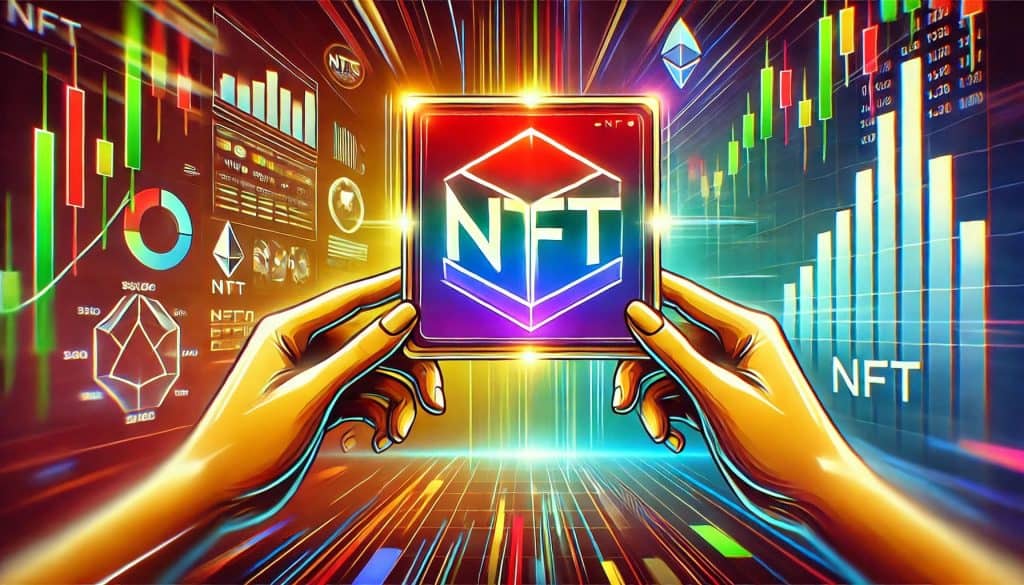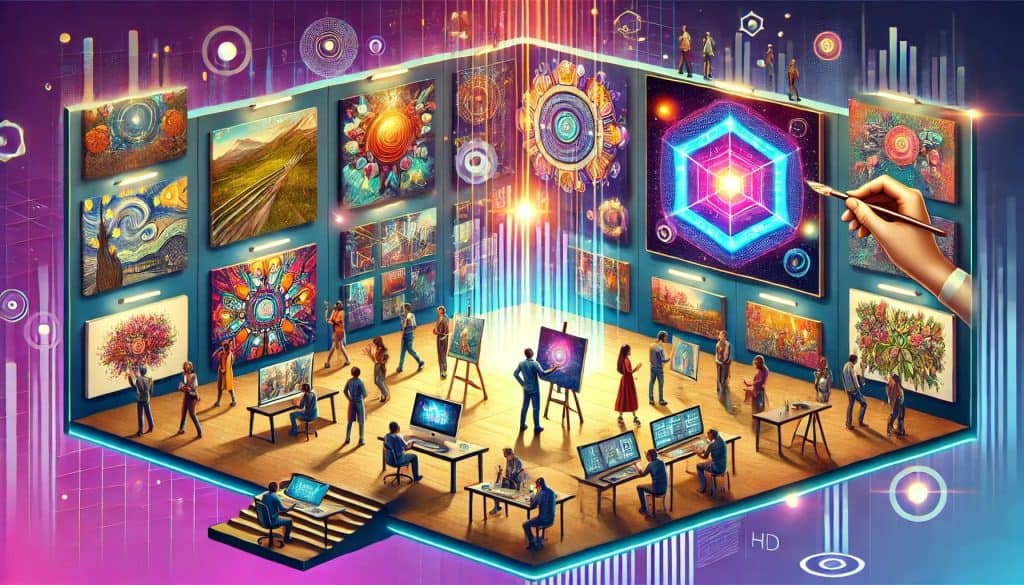Non-fungible tokens (NFTs) have taken the digital world by storm, changing the way we perceive ownership and value in the digital age. From digital art to virtual real estate, NFTs have opened up new possibilities for creators, collectors, and investors. But what exactly are NFTs, and why are they getting so much attention? This article delves into the fascinating world of NFTs, exploring their background, evolution, types, and impact. By the end of this journey, you’ll have a comprehensive understanding of NFTs and their importance in today’s digital landscape, especially in the context of web3.
What are non-fungible tokens (NFTs)?

NFTs have become a buzzword in the digital world, revolutionizing the way we perceive ownership and value, but what exactly are non-fungible tokens (NFTs)?
Non-fungible tokens (NFTs) are unique digital assets that represent ownership of a specific item or piece of content, validated using blockchain technology. Unlike cryptocurrencies like Bitcoin, which are exchangeable or “fungible,” each NFT is unique and cannot be exchanged one-for-one with any other NFT. This uniqueness and indivisibility makes NFTs ideal for representing digital collectibles, art, music, virtual real estate, and even tweets. NFTs are an important component of the emerging web3 ecosystem, where decentralized applications (dApps) and blockchain technology aim to create a user-centric internet.
Background on non-fungible tokens (NFTs)
The concept of NFTs emerged from the broader field of blockchain technology, which underpins cryptocurrencies like Bitcoin and Ethereum. Blockchain provides a secure and transparent way to ensure that each NFT is unique and to track ownership. Here’s a quick overview
- Blockchain technology: The backbone of NFTs, ensuring the uniqueness and ownership traceability of digital assets.
- Ethereum network: Most NFTs are built on Ethereum due to its powerful smart contract capabilities, making it a key player in the Web3 ecosystem.
- Smart Contracts: Execute your own contracts with terms written directly into the code that are critical to NFT transactions.
The evolution of non-fungible tokens (NFTs)

NFTs have evolved significantly since their inception, growing from a niche digital collectible concept to a mainstream phenomenon. This evolution can be traced through a few key stages
| Year | Milestones |
|---|---|
| 2012 | Color coin: An early concept for representing real-world assets on the blockchain. |
| 2014 | Counterparty: Launched to create and exchange tokens on the Bitcoin blockchain. |
| 2017 | Cryptopunk and Cryptokitties: popularized NFTs, leading to widespread interest and investment. |
| 2021 | Mainstream adoption: With high-profile sales and celebrity endorsements, NFTs have gained global attention. |
Types of NFTs
NFTs come in many forms, each serving a different purpose and industry:
| Type | Description |
|---|---|
| Artistic ability | Digital artwork can be sold as NFTs, allowing artists to monetize their work directly. |
| Collections | Digital collectibles like cryptofunks and trading cards. |
| 游戏 | In-game assets, such as characters, skins, and items. |
| Music | Tokenized music tracks and albums that can be sold directly between artists. |
| Real estate | Virtual real estate in a digital world like Decentraland. |
How do NFTs work?
NFTs work through a combination of blockchain technology and smart contracts, which are key elements of Web3. We summarize the process as follows
- Minting (minting): The process of converting a digital file into an NFT on the blockchain.
- Ownership: Ownership is recorded on the blockchain, providing a transparent and immutable record.
- Transfer: NFTs can be bought, sold, or traded, with each transaction recorded on the blockchain.
- Verification: The blockchain verifies that the NFT is unique and checks its ownership history.
Here’s a detailed explanation of how NFTs work:
Companies
OpenSea
OpenSea is the largest NFT marketplace, providing a platform for users to buy, sell, and discover a wide variety of NFTs. From digital art to virtual real estate and domain names, OpenSea supports a wide range of digital assets. The platform’s user-friendly interface and extensive catalog make it a popular choice for beginners and experienced NFT collectors alike.
Example: OpenSea hosts collections like Boring Ape Yacht Club and Axi Infinity, which generate millions of sales.
Rare
Rareable is a decentralized marketplace where users can create, buy, and sell NFTs. It supports a wide range of digital assets, including art, music, and video. What sets Rareable apart is its focus on decentralization and community governance. Users can participate in the platform’s decision-making process through the RARI token.
Example: Rareable is known for supporting niche and emerging artists, giving them a platform to reach a global audience.
Super Rare
SuperRare focuses on high-quality digital art and curates unique, single-edition pieces. Each piece of art on SuperRare is authenticated by the blockchain to ensure its originality and ownership history. The platform is highly selective and works closely with artists to maintain its reputation for excellence.
Example: Famous digital artists such as Trevor Jones and Pak have sold their work on SuperRare, often for significant prices due to the platform’s reputation.
Foundations
The Foundation provides a space for creators to monetize their digital work by empowering artists to directly issue and sell NFTs. The platform operates on an invitation-only basis, ensuring the curation of high-quality content. The Foundation’s emphasis on artist empowerment and community support has made it a popular choice for digital creators who want to control sales and interactions with collectors.
Example: An example of a foundational success is the sale of the viral internet meme “Kitten,” which sold for nearly $600,000 as an NFT.
NBA Top Shots
NBA Top Shot offers officially licensed NBA collectible highlights, allowing fans to own a piece of basketball history. These digital collectibles, known as “Moments,” are sold in packs and can be bought, sold, and traded on the NBA Top Shot marketplace. Each Moment features a specific play from an NBA game, complete with video footage and player stats.
Example: The platform has been a huge success, with some Moments selling for hundreds of thousands of dollars – for example, a LeBron James dunk Moment sold for over $200,000, demonstrating the high demand for these unique digital collectibles.
Pros and cons
NFTs offer exciting possibilities, but they also come with challenges and criticisms. Here are the main pros and cons
| Prose | Cones |
|---|---|
| Verify ownership | Blockchain’s high energy consumption |
| Artist Empowerment | Market speculation potential |
| Interoperability | Legal and regulatory uncertainty |
| Innovative revenue streams | Intellectual property issues |
Impact of NFTs

NFTs have far-reaching impacts, both positive and negative, across many different sectors:
- Art: NFTs have created a new revenue stream for artists, allowing them to sell digital art directly to collectors without the need for intermediaries. This democratization of art ownership has empowered many creators, but the speculative nature of the market can lead to volatility and unpredictability in art values.
- Gaming: NFTs enable true ownership of in-game assets, allowing players to buy, sell, and trade items across different games and platforms. This has led to the rise of the play-to-earn model, where players can earn real money by playing games. However, the integration of NFTs in games has also raised concerns about the commercialization of the gaming experience.
- Finance: NFTs offer new investment opportunities by allowing fractional ownership of high-dollar assets such as real estate and rare collectibles. This can lower the barrier to entry for investors. Nevertheless, the lack of regulation of the NFT market poses risks for investors.
- Environment: Environmental concerns are growing due to the energy consumption of blockchain technology, especially Proof-of-Work blockchains like Ethereum. Issuing and transferring NFTs can generate a large carbon footprint, requiring more sustainable solutions.
Conclusion
Non-fungible tokens (NFTs) have transformed the digital landscape, providing new ways to own, trade, and monetize digital assets. While they offer innovative opportunities, they also present significant challenges. As the technology evolves, it will be important to address these issues to ensure sustainable growth.
NFTs represent a revolutionary shift in the way we think about digital ownership in the broader context of Web3. They offer new avenues for creators to monetize their work, provide collectors with unique digital assets, and open up innovative investment opportunities. However, the NFT market is still in its infancy and faces several challenges that need addressing to ensure sustainable growth, including environmental concerns, legal and regulatory uncertainty, and the potential for market speculation. As the technology and market matures, it will be important to find a balanced solution that maximizes the benefits of NFTs while mitigating their drawbacks.
Key takeaways
- Non-fungible tokens (NFTs) are unique digital assets validated through blockchain technology.
- It has evolved from a niche collectible to a mainstream phenomenon.
- Types of NFTs include art, collectibles, gaming assets, music, and virtual real estate.
- Companies like OpenSea, Rareable, and NBA Topshot are driving the NFT market.
- Advantages of NFTs include ownership verification and artist empowerment, while disadvantages include high energy consumption and regulatory uncertainty.
- NFTs are an important part of the emerging Web3 ecosystem, which aims to create a more decentralized and user-centric internet.
See also
- Investopedia. Non-Fungible Tokens (NFTs).
- Forbes. What are NFTs? Non-Fungible Tokens Explained.
- Kaspersky. What is an NFT?
